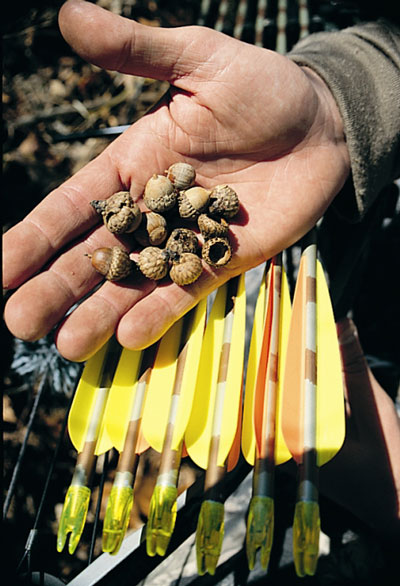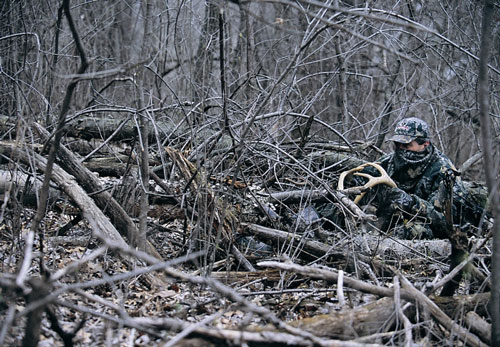The Early Season
 Food location dictates virtually all early-season treestand hunting. Prior to the stirrings of the rut, deer are lazily ingesting the protein and calories needed for breeding and, ultimately, the approaching harsh winter. Evening hunting is the premier time to intercept deer during the early season.
Food location dictates virtually all early-season treestand hunting. Prior to the stirrings of the rut, deer are lazily ingesting the protein and calories needed for breeding and, ultimately, the approaching harsh winter. Evening hunting is the premier time to intercept deer during the early season.
Control is the central reason evening hunting outshines morning. At no other time will a hunter have the ingredients for a controlled ambush of this magnitude. Deer are more patterned at this time than any other, maintaining a fairly consistent schedule between bedding and feeding while limiting movement patterns to sunrise and sunset.
Corridors between bedding and feeding locales, trails leading to a food source or stand sites on top of food will produce and should be utilized exclusively in the evening. Maintain control by entering the zone during afternoon hours when deer are bedded. Morning stand entry is a sure-fire way to spook deer from a food source.
Midwestern bowhunter Mark Browning glasses deer in late summer over varied food sources such as soybeans, clover, and alfalfa. He locates and patterns a specific large buck and utilizes the evening ambush technique. One such buck routinely exited standing corn to feed on green, leafy soybeans just at dusk. Mark intercepted the early season Goliath in a timbered finger between corn and beans. The deer scored 143 5⁄8.
Early season hunters should realize, unless patterning a specific buck, most deer sighted will be does. It is an excellent time to dissect general whitetail patterns and take advantage of liberal doe regulations to fill the freezer.
Although evening gets my nod, hunters can also employ a pair of morning techniques during the early season. The first tactic is a matter of swapping sides. Instead of leaning on the food source, hang tight to bedding cover. Morning entry must be downwind and out of sight of the food source. It is then a matter of awaiting the return of feeding deer. However, this ploy can backfire as well as succeed, as deer move in predawn hours, and any entry route may be the wrong one.
More important, the edges of well-used bedding areas are great stand locales later in the season when bucks begin seeking does. It’s not prudent to wear out a stand site before it reaches full potential.
A less invasive early-season morning tactic is setting up along non-specific white oak flats in timbered, deer-rich country. Deer often meander throughout the late morning, either browsing or rooting acorns from the forest duff. It is a lazy, enjoyable, and random style of bowhunting that minimizes intrusion around trampled food sources and known bedding territory.
The Rut
 When movement patterns change as deer go into the rut phase, smart hunters follow suit. Although lusty bucks develop nomadic and unpredictable characteristics at this time, morning hunting may have an edge.
When movement patterns change as deer go into the rut phase, smart hunters follow suit. Although lusty bucks develop nomadic and unpredictable characteristics at this time, morning hunting may have an edge.
Food sources are no longer site-specific. Deer begin browsing. Movements are more random and controlled hunting is no longer a viable tactic. While the food options diminish, bedding sites become more specific. The harvest of row crops and the winter kill of brush force deer deep into thickets as feeding options are eliminated.
The edges of bedding thickets are prime treestand sites during the rut. Cruising bucks migrate along the cover patches seeking hot does. Bucks often hound-dog the thicket edges where deep cover meets open woods. This is the time to hunt aggressively. Set up tight to the thicket in predawn before the does return to bed.
Bucks become increasingly difficult to pattern during the rut. Hormones are the guiding force and crazed males can be encountered any time, any place. However, movement is most intense when does are active.
Funnels and pinch points are special rut ambush locations, and it just makes sense to exploit the morning hours when scenting conditions are most favorable. Success at these stand sites relies on buck movement. Good scenting and cooler morning temperatures boost buck activity.
Next: The Late Season






